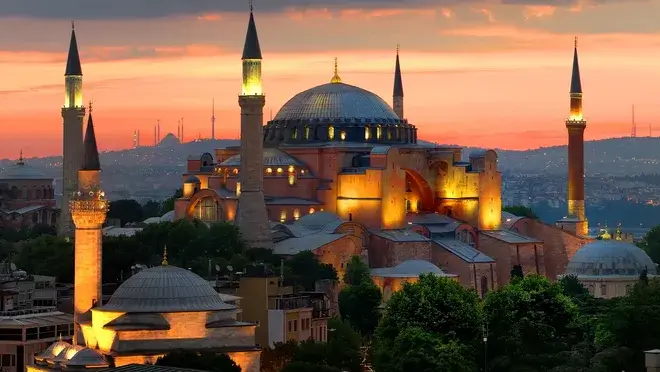Hagia Sophia (537 AD)

Title: Hagia Sophia
Location: Istanbul, Turkey
Construction Started: 532 AD
Completion Year: 537 AD
Status: UNESCO World Heritage Site, Museum (formerly a mosque)
Architectural Style: Byzantine, later converted to Ottoman architecture
Historical Significance: Symbol of cultural and religious fusion
Materials: Brick, stone, marble
Description: Hagia Sophia, also known as Ayasofya, is an iconic architectural marvel located in Istanbul, Turkey. It was originally built as a cathedral during the reign of the Byzantine Emperor Justinian I and was completed in 537 AD. For almost a thousand years, it served as the principal church of the Eastern Orthodox Church, witnessing significant religious ceremonies and events.
Hagia Sophia is renowned for its impressive dome, which was an engineering marvel of its time. The vast interior space, adorned with intricate mosaics and massive marble columns, is a testament to the grandeur of Byzantine architecture.
In 1453, following the Ottoman conquest of Constantinople, Hagia Sophia was converted into a mosque, and minarets were added to the exterior. Islamic elements, such as calligraphy and Islamic art, were incorporated into the interior design.
In 1935, under the leadership of Mustafa Kemal Atatürk, the founder of modern Turkey, Hagia Sophia was transformed into a museum as part of secularization efforts. It became a UNESCO World Heritage Site in 1985, recognizing its cultural and historical significance.
Recently, in 2020, Hagia Sophia was reconverted into a mosque, sparking debates about its status as both a religious and cultural symbol. Today, it continues to be a major tourist attraction, drawing visitors from all over the world who come to marvel at its architectural splendor and rich history, reflecting the interwoven cultural heritage of the Byzantine and Ottoman empires.
Interesting Fact: It's difficult to estimate its original construction cost, but it's deemed priceless today.
